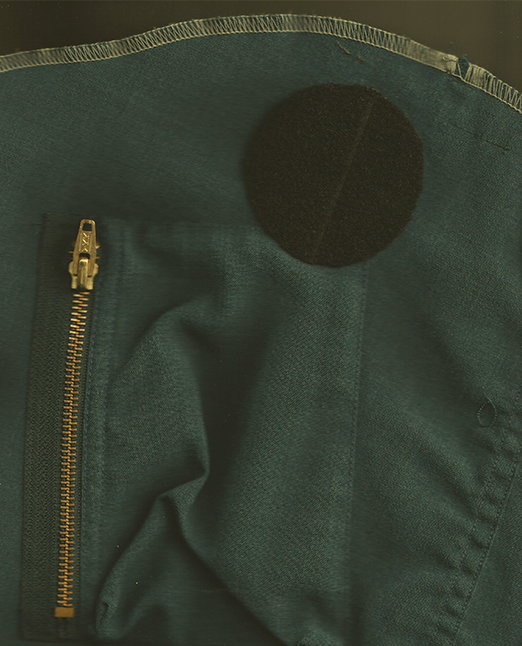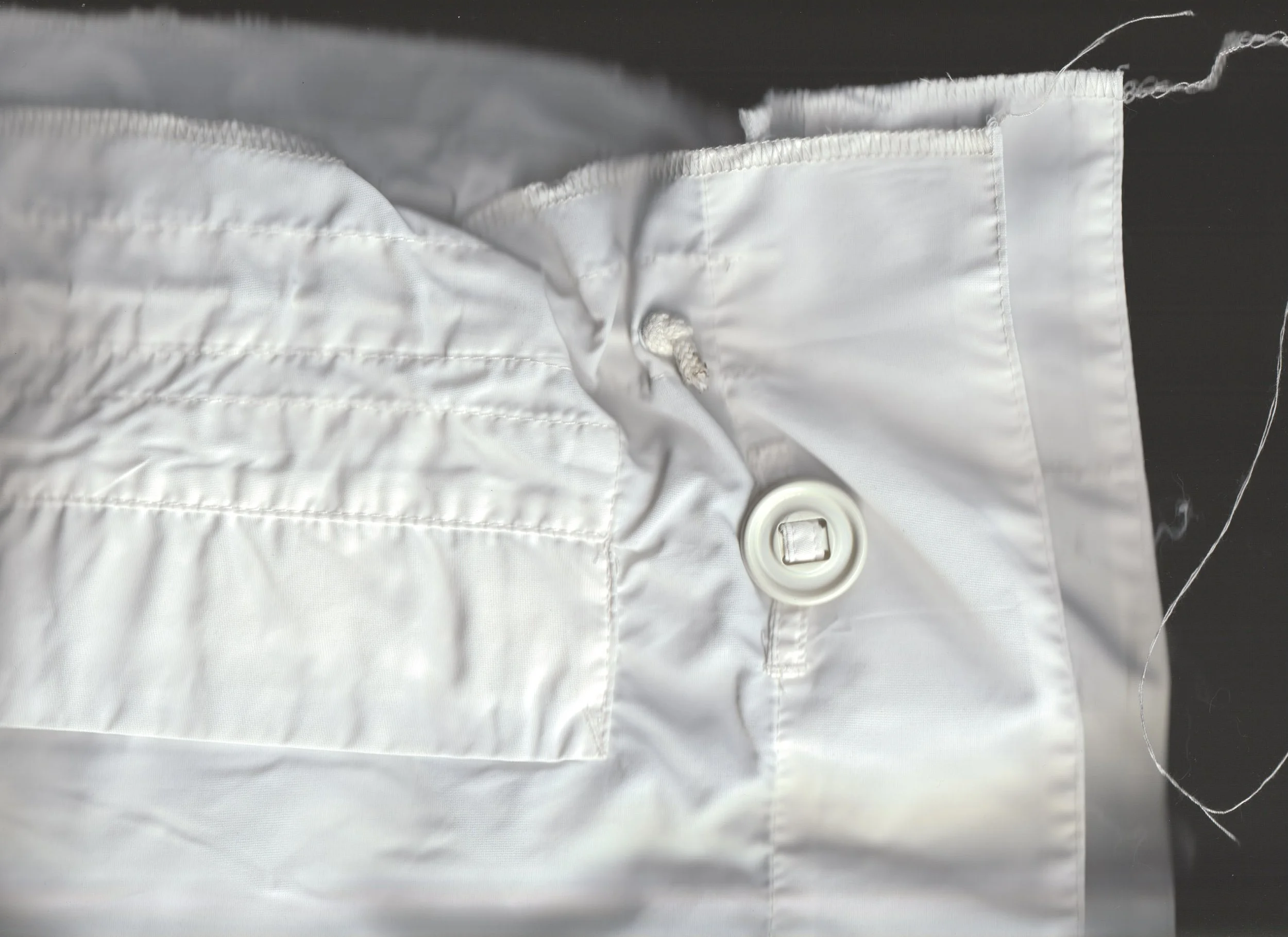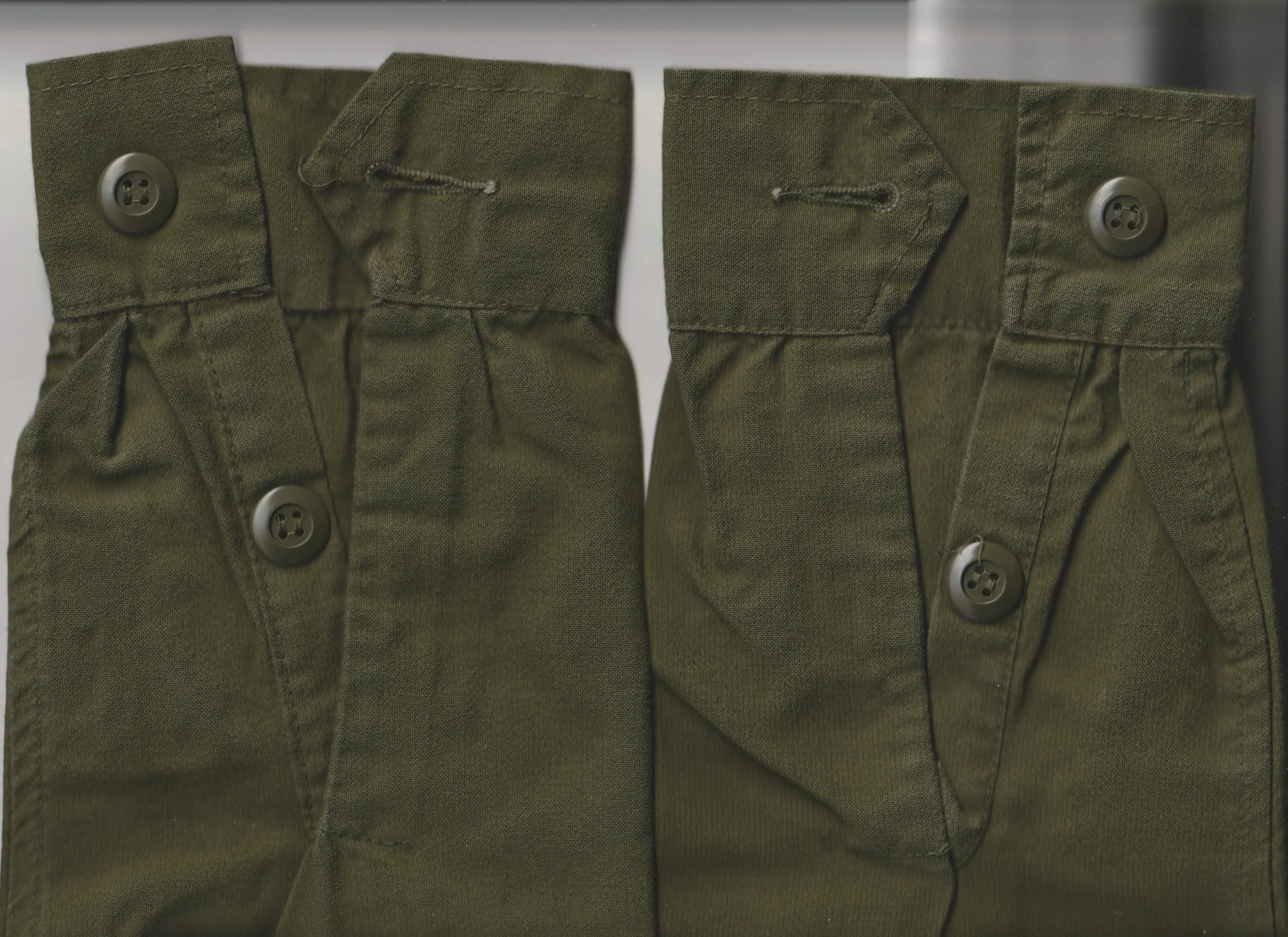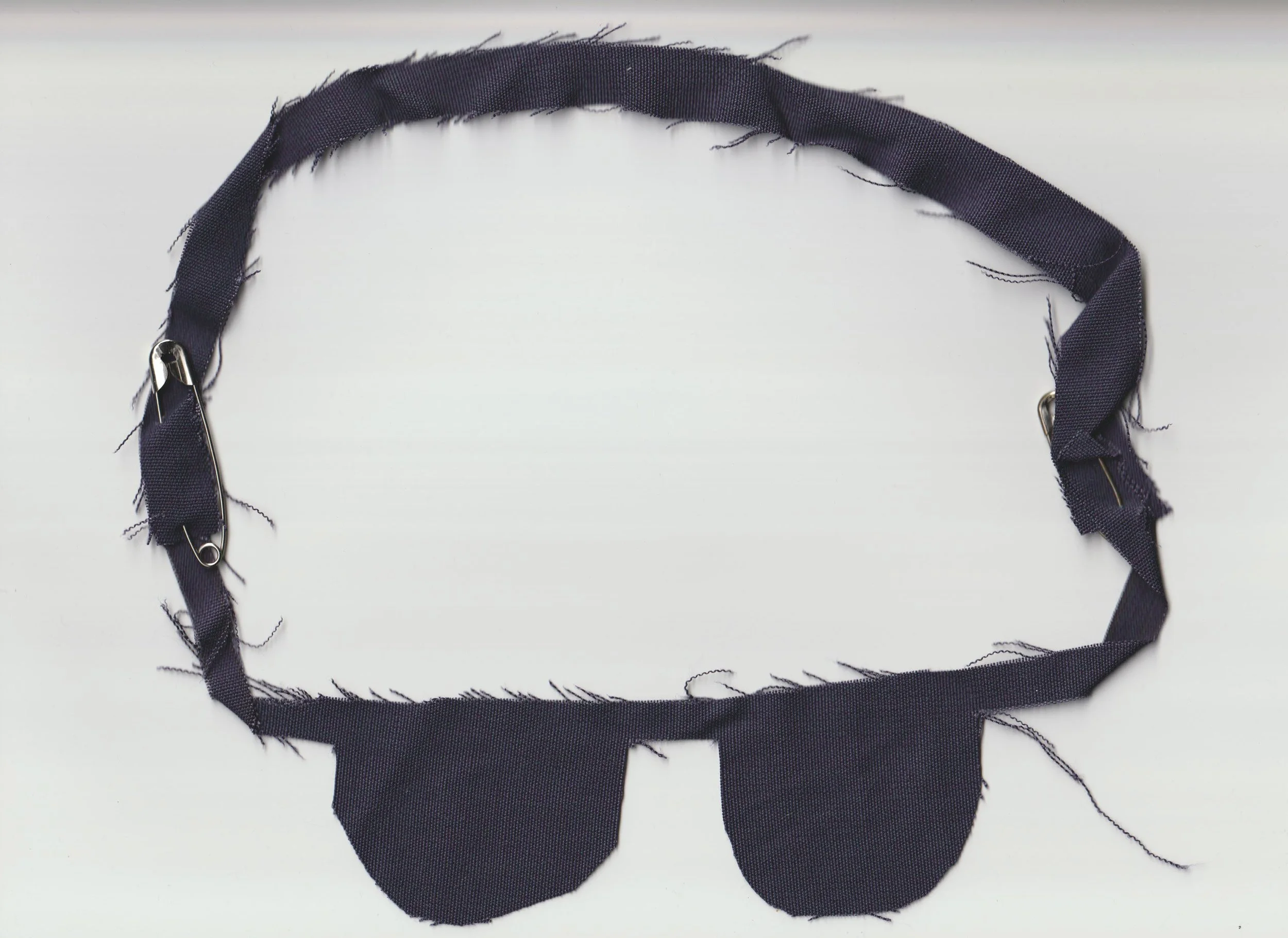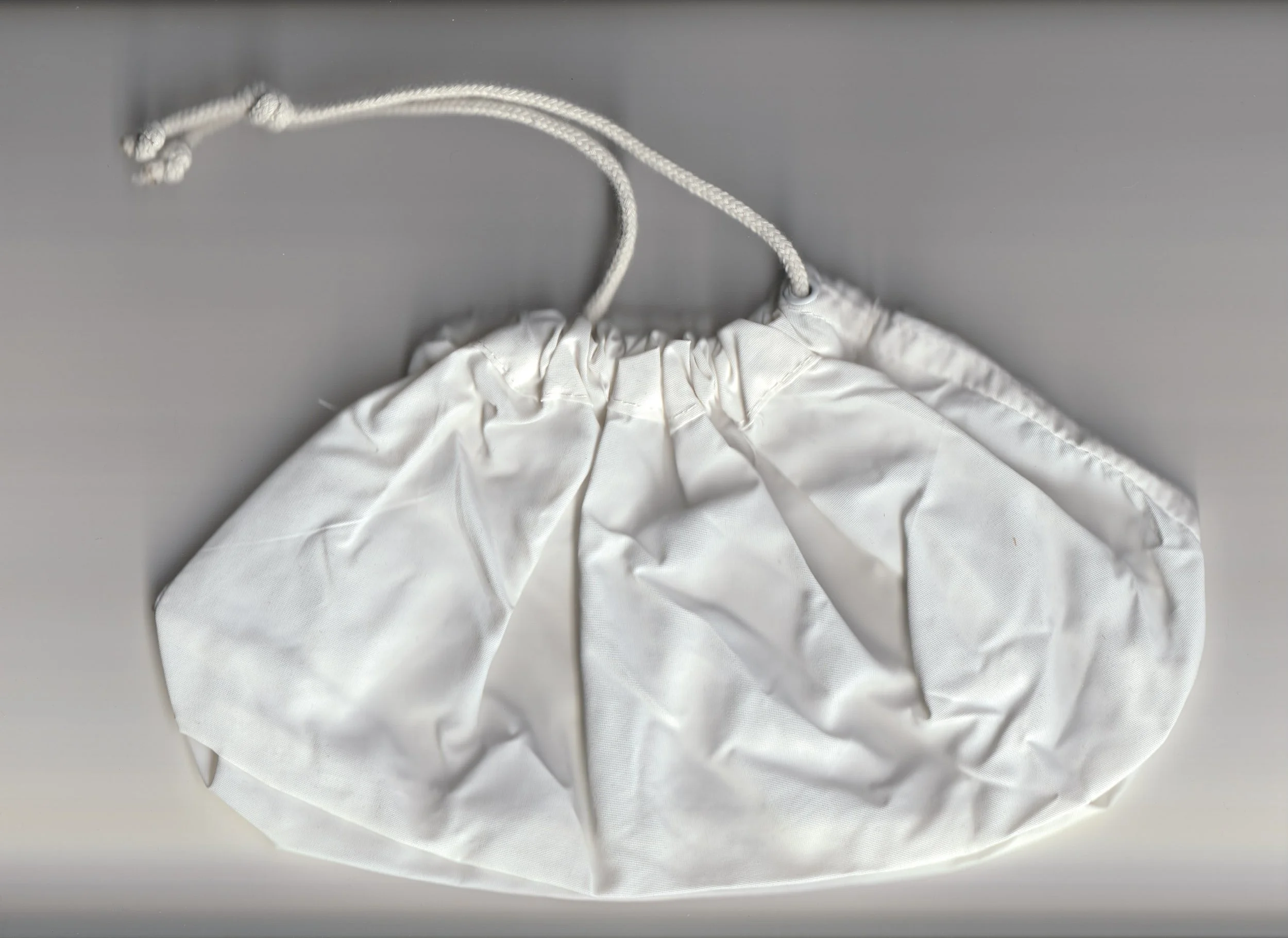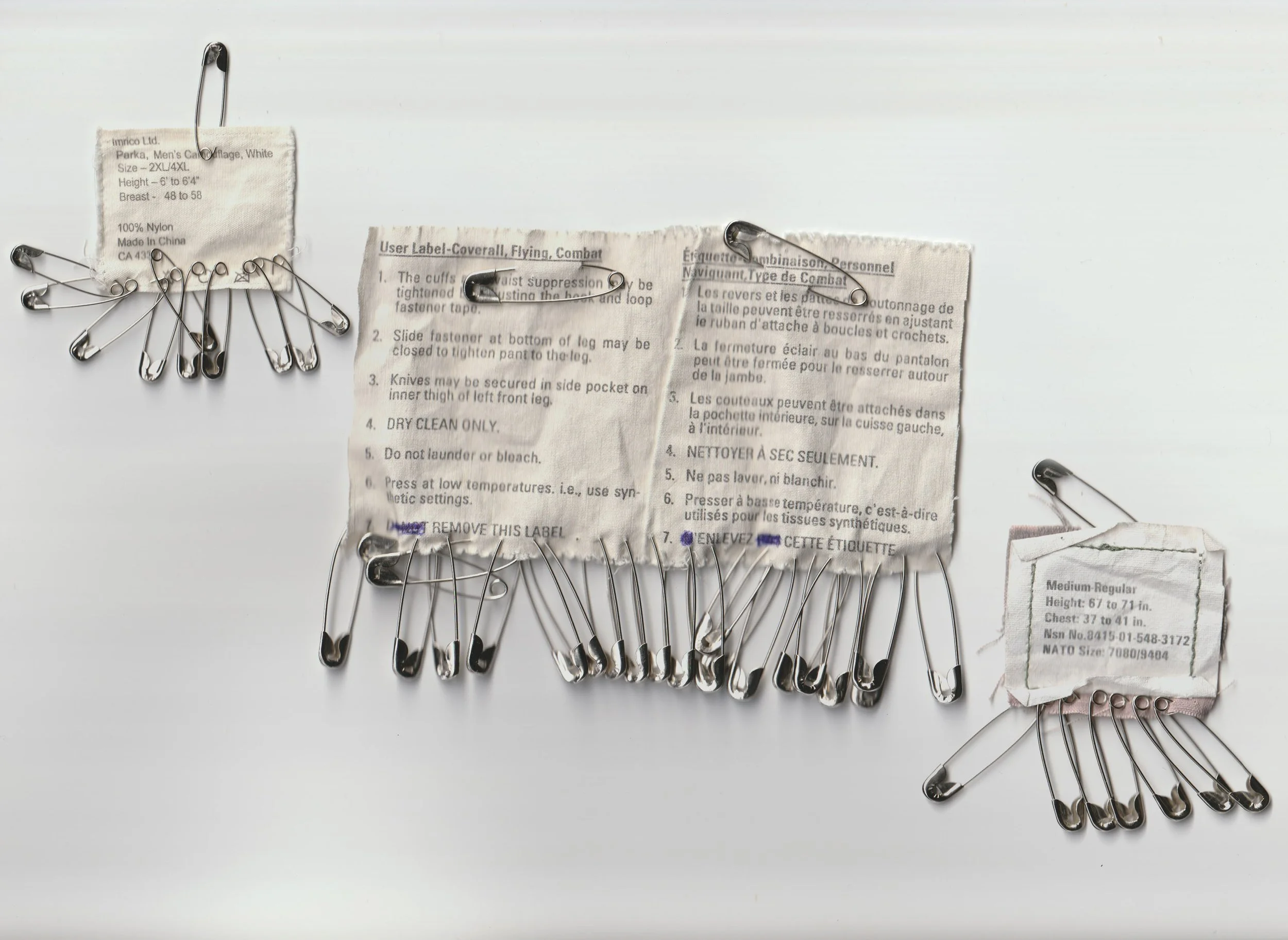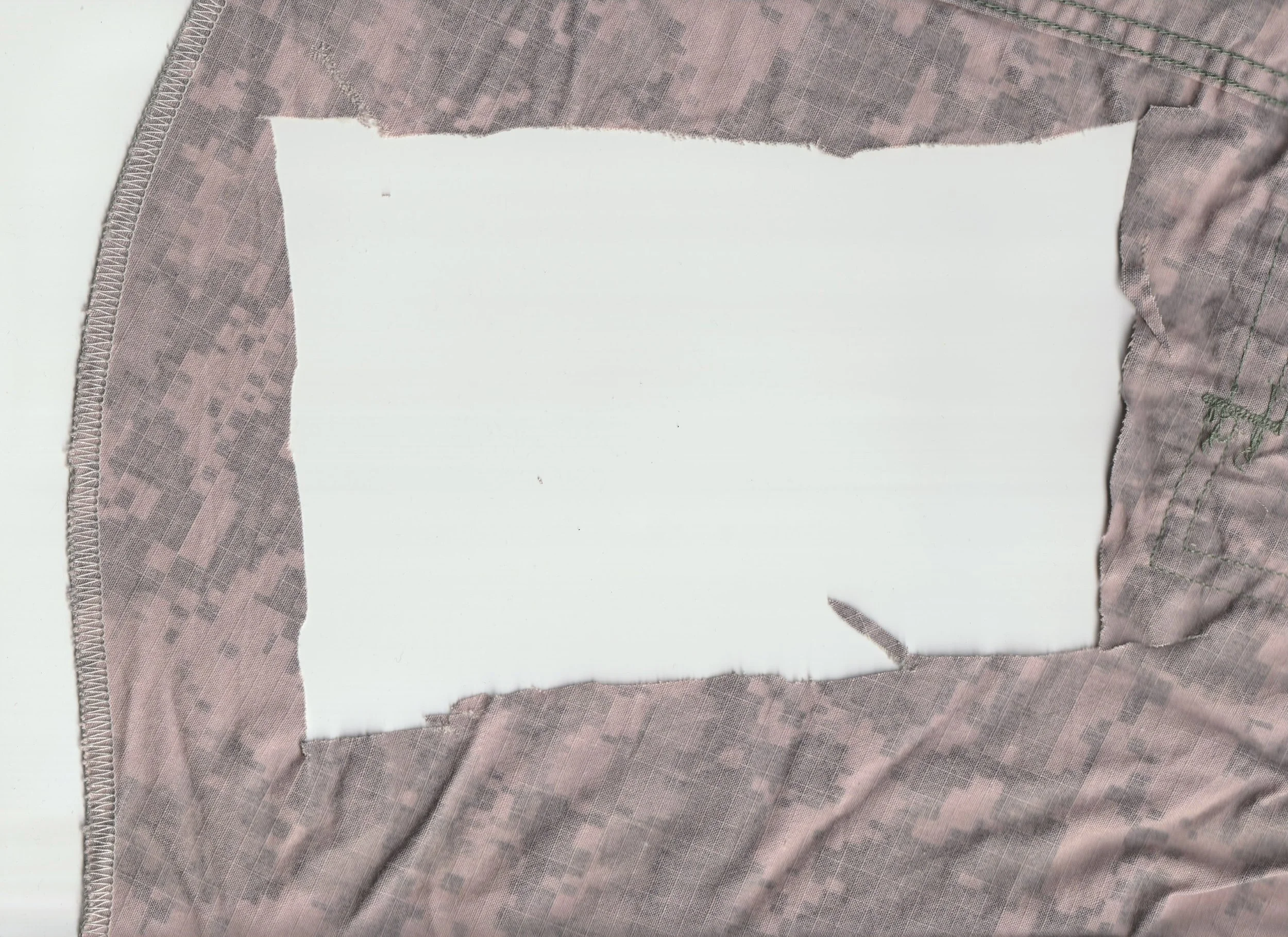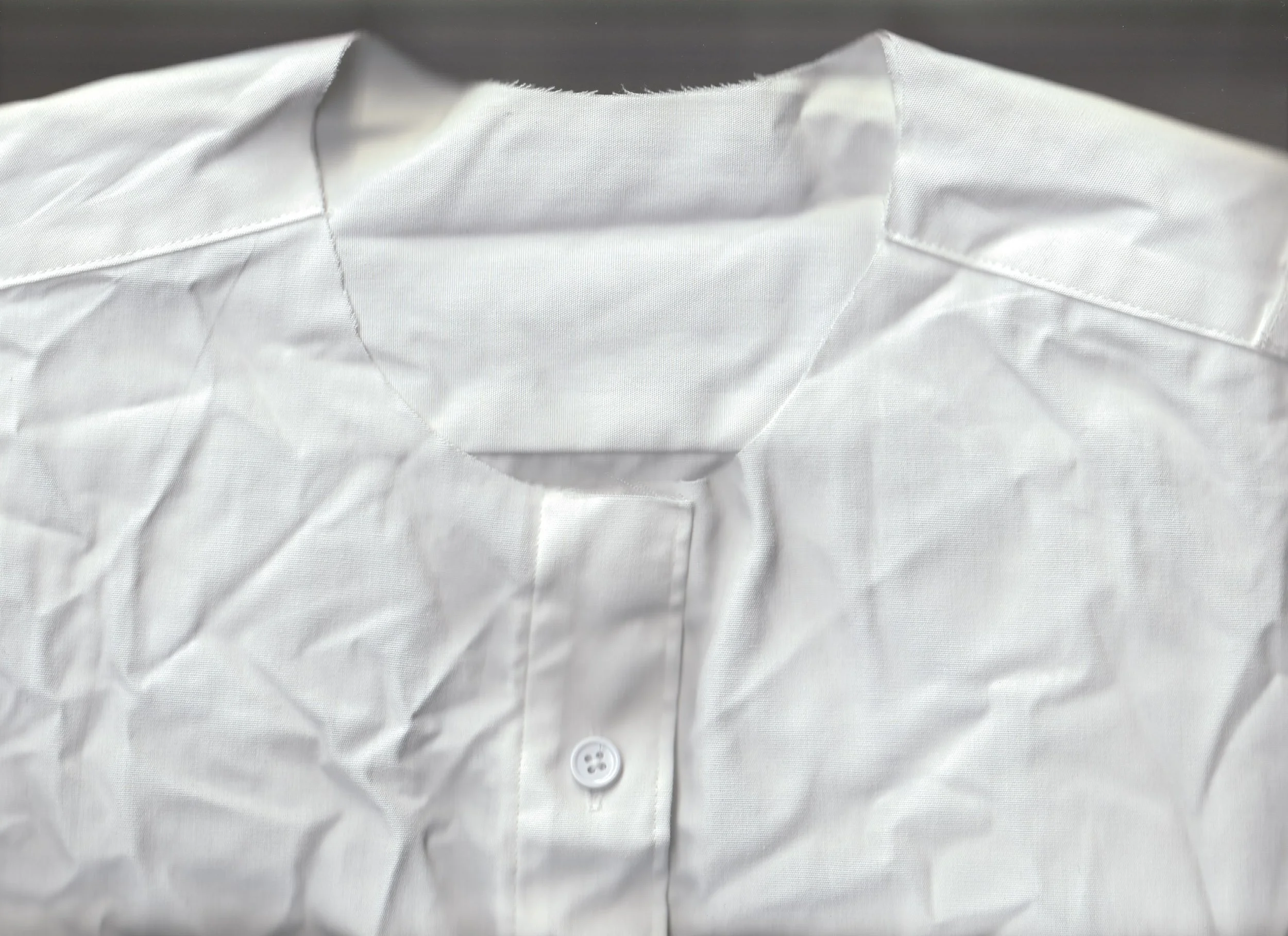Reflections on “Uniforms (Re)done: A Workshop in Experimental Reconstruction Methodologies”
By Tricia Crivellaro
DOI: 10.38055/UFN050107
MLA: Crivellaro, Tricia. “Reflections on “Uniforms (Re)done: A Workshop in Experimental Reconstruction Methodologies.” Unravelling Fashion Narratives, special issue of Fashion Studies, vol. 5, no. 1, 2025, pp. 1-17. https://doi.org/10.38055/UFN050107.
APA: Crivellaro, T. (2025). Reflections on “Uniforms (Re)done: A Workshop in Experimental Reconstruction Methodologies”. Unravelling Fashion Narratives, special issue of Fashion Studies, 5(1), 1-17. https://doi.org/10.38055/UFN050107
Chicago: Crivellaro, Tricia. “Reflections on “Uniforms (Re)done: A Workshop in Experimental Reconstruction Methodologies”.” Unravelling Fashion Narratives, special issue of Fashion Studies 5, no. 1 (2025): 1-17. https://doi.org/10.38055/UFN050107.
Volume 5, Issue 1, Article 7
Keywords
Uniform
Object-based research
Speculative design
Reconstruction
Garment-based exploration
Abstract
Uniforms have been in a constant state of flux—it remains unclear what future forms and applications they may take in response to changing social, political and cultural conditions. How can uniforms be repurposed and reconceptualized in a manner that speaks to the current atmosphere and which embodies our prevailing conditions? This essay reflects on the workshop “Uniforms (Re)done: A Workshop in Experimental Reconstruction Methodologies” presented during the Fashion Studies Network Symposium. Using uniforms as research tools, participants engaged in an experimental workshop informed by object-based analysis, speculative design and garment-based reconstruction. Through collaborative exploration, attendees revealed novel tactile forms for uniforms that possess new stories and materialities.
Introduction
This paper reflects on the workshop “Uniforms (Re)done: A Workshop in Experimental Reconstruction Methodologies” presented at Unravelling Fashion Narratives at Parsons, The New School, New York, on June 8, 2024. The workshop evolved from the “Uniform-Undone” research project, which began in 2022 and focused on reimagining uniforms through sustainable design and garment-based exploration. This project and related research was subsequently published as “Uniform-Undone: A Study in the Repurposing of Military Attire through History and Experimental Practice” in Critical Studies in Men’s Fashion Journal (2023).
This paper provides context on the utilitarian and symbolic roles uniforms play as both practical garments and fashion items. It also outlines the various methodologies employed in the project such as object-based research, speculative design and reconstruction. The three phases—1) Contemplation, 2) Speculation, and 3) Reconstruction—are described, along with summaries of the workshop's creative outcomes, key themes and implications.
Background
Uniforms have been in a constant state of flux—their roles, purposes, and associations shifting over time due to political, social, and cultural changes. Uniforms come in various forms, such as sports jerseys, military attire, and school clothing, and often reflect an individual’s occupation, like nurses, police officers, or lawyers (Delvaux 2019, Šterman 2011). In its simplest form, the uniform acts as a functional object and is worn for utilitarian reasons; it might offer “the best balance between functionality, comfort and durability, due to excellent functional fabrics, manufacturing technology and design” (Šterman, 2011, p.10). However, the uniform’s traditional function is often transcended to serve symbolic purposes, as well as to communicate social belonging and professional distinction (Craik, 2005; Hertz, 2007). For example, sports uniforms were originally designed to offer the necessary freedom for exercise while also serving to distinguish different teams. Over time, their function evolved to symbolize toughness and excellence and to serve as emblems of civic pride (Stephenson, 2019).
It could be argued that uniforms diminish social differences by creating the appearance of equality among wearers, potentially serving as a means of eliminating distinctions based on class and social demographics (Bonami, 2000). The implementation of uniforms in school settings is a clear example of this approach, aiming to establish a standardized attire within the educational environment. However, while uniforms might prescribe a specific form of dress, and thus help internally in diminishing outward demarcations of difference between students, they simultaneously also create visible distinctions—for example, marking out a clear divide between pupils of one educational system from those of another. As such, dress codes can strengthen class divisions and social distinctions by differentiating between groups of equal standing, while also limiting individual expression by restricting freedom to decorate and adorn the body (Stephenson, 2019; Tynan, 2016).
One’s habituation to the specificity of uniforms and their socialization into wearing it “correctly” not only constitutes the learned performance of “wearing” the uniform, but is essential to membership within a particular institution and to defining one’s role within it. Uniforms enforce discipline and class distinctions by promoting a singular, “correct” appearance, eliminating individual aesthetic choices, while also internalizing the uniform’s codes and institutional behaviors (Craik, 2005; Tynan, 2016). The imposition of European-style uniforms in Canadian Residential Schools serves as a historic example of how clothing was used as a “foundational component to civilizing Indigenous children by churches and government” (Ottmann, 2020, para. 29). Here, uniforms functioned not only as a tool for surveillance and control but also as a means to enforce and coerce the adoption of Europeanized social codes and mores (Ottmann, 2020).
Expanding on themes of power and oppression, Martine Delvaux’s Le Boys Club (2019) explores how uniforms are often a predicate to entry into spaces where games are played, business is conducted, and work is performed. In this sense, the uniform serves as the dress code signaling one’s “belonging” (2019). Delvaux critiques the underlying intention behind wearing a uniform, which she argues is to grant agency and facilitate one’s ascent within a social hierarchy. She critiques the “club” as a space where expressions of femininity are openly opposed and suppressed, and where violence against women is perpetuated without hesitation. For example, even now, the suit still epitomizes the archetypal “standard masculine dress” in that it also symbolizes “business attire for the corporate body” (Guerra, 2019). Its significance is most pronounced when worn by those in positions of power, particularly men in business or positions of authority, where it becomes a marker of patriarchal dominance and hierarchical standing (Delvaux, 2019). Suits, along with other work uniforms, often carry symbolic meanings that promote uniformity and deindividualization, rendering the body invisible to some while also highly visible to those initiated into the codes associated with that form of dress (Blechman, 2004; Bonami et al., 2000).
In summary, uniforms encompass complex systems of beliefs and practices that touch on concepts including, but not limited to, identity, class, social belonging, and gender—and whose significance and symbolism are interpreted by both wearers and observers alike.
Methodology
One of methodologies adopted in this project is object-based research, the study of dress artifacts through observation, contemplation, and interpretation (Mida & Kim, 2015). More specifically, the process builds upon the checklist approach developed by Ingrid E. Mida and Alexandra Kim in The Dress Detective (2015). The first workshop phase, Contemplation, examines uniforms as vehicles for understanding the world in which we live. It aims to reveal the continuity of past and present memories, experiences anchored in clothing (Csikszentmihalyi, 1993). In the context of this workshop, observational experiences are paired with hands-on engagement with clothing to reinforce a sensory connection, allowing participants to truly “get to know” the uniforms (Sampson, 2018).
Speculative design is used as a framework for the second phase of the workshop, Speculation. In their book Speculative Everything: Design, Fiction, and Social Dreaming (2013), designers Anthony Dunne and Fiona Raby define speculative thinking not as a process for improving or altering the present, but as a way to explore entirely new possibilities. Similarly, Laura Barendregt and Nora S. Vaage (2021) view speculation as situated in the future, but indicate that it could encompass alternative pasts or present realities. In their book Radical Fashion Exercises: a Workbook of Modes and Methods (2023), editors Laura Gardner and Daphne Mohajer va Pesaran dedicate an entire chapter to fashion exercises focused on speculating future possibilities for the industry. Whether aspirational, utopian, or dystopian, they argue that it is essential to consider alternative visions and use speculation as a tool to reflect on both past and present fashion conditions (2023). The participants’ perspectives offered a holistic approach to the act of speculation and “[revealed] the way in which the world is produced through the constitutive acts of subjective experience” (Butler, 1988, p.522).
Originating from modern philosophy, deconstruction has proven to be an insightful methodology for studying fashion, offering valuable perspectives on already-constructed garments in both pedagogical and theoretical contexts (Dieffenbacher, 2021). For philosopher Jacques Derrida, “deconstructionism” described a “double thinking” approach whereby a double movement—simultaneous acts of deconstruction/ construction—is inherent within the word itself (Gill, 2016). This “successive phases” inquiry becomes particularly pertinent in the context of this workshop, which seeks to examine contrasting but complementary concepts such as destruction/creation, making/ unmaking, past/present/future (Gill, 2016). If deconstruction necessitates “taking apart” and “building”, what, then, does (re)construction signify? A compelling example of deconstruction within the field of applied fashion studies can be found in the work of Martin Margiela, who repurposes old garments, transforming them into entirely new creations (Geczy & Karaminas, 2019; Gill, 2016). On the other hand, uniforms are regularly subject to processes of reconstruction as they are frequently repurposed and reinterpreted through everyday attire, costume, or in deliberate acts of disruption. Artists like Laurie Anderson used tailoring as a form of defiance, critiquing power and control, while the duo Gilbert and George wore suits to present themselves as both united and distinct individuals (Porter, 2022), transforming the narrative of uniforms through wear. Chris Burden’s work, L.A.P.D. Uniform, featured 30 larger-than-life uniforms, complete with badges, belts, batons, and handcuffs. These reimagined replicas were used to draw focus to the 1992 Los Angeles riots, reconstructing the uniform’s symbolism in a powerful critique of militarized police dress (Burden). In the case of “Uniform-Undone” (see Introduction), the utilitarian codes associated with military wear were transformed by engaging with humanwear design. Reconstruction was explored through textile manipulation using scraps and methods such as Do-It-Yourself (DIY), upcycling, and zero-waste guided the repurposing process (Crivellaro & Lungu, 2023).
While the workshop primarily focused on reconstruction techniques in design, it also encouraged deconstruction methods, as the two approaches are deeply interwoven. For the third phase of the workshop, Reconstruction, suggested techniques included unraveling, cutting, knotting, draping, unstitching, drawing, and pinning. Tools were made available for participants' use such as draping pins, safety pins, scissors, seam rippers, and markers. Dress forms were provided, and participants were also encouraged to use their own bodies and clothing as a canvas.
Workshop Responses
The workshop had 14 participants, some with backgrounds in fashion or a strong interest in the industry, though specific details were not gathered. Each participant received a booklet with prompts for recording their thoughts and reflections. Surplus and thrifted uniforms from a personal archive were used as research tools for analysis. A total of fifteen garments were displayed, including a flying combat one-piece coverall, a waterproof white parka and pants set, several white short-sleeved shirts worn by police officers, GATTS workwear pants, military items like a tactical camouflage bomber, and more. The uniforms were laid flat and layered on a large table. Although they appeared intact at first glance, some of the uniforms were already pre-fragmented (see figs. 1, 2, 3).
Figure 1
As part of workshop phase 1) Contemplation: A fragment of a flying combat one-piece coverall uniform. 2024. © Tricia Crivellaro.
Figure 2
As part of workshop phase 1) Contemplation: A fragment of a waterproof white parka and pants set. 2024. © Tricia Crivellaro.
Figure 3
As part of workshop phase 1) Contemplation: Sleeve fragments from a khaki military shirt. 2024. © Tricia Crivellaro.
Phase 1: Contemplation
Participants were invited to observe and interact with the garment-objects. They were asked to reflect individually and to describe the specific needs the uniforms fulfill, how the garments made them feel, and the particular groups of people who were likely to wear them. Additionally, participants were encouraged to share their thoughts on what they liked and disliked about the uniforms.
A consensus emerged among participants regarding the key concepts associated with the uniforms on display, particularly their hyper-functionality and utilitarian design. These features were frequently highlighted, with specific descriptions such as “mystery zippers”, “pockets on pockets”, “so much Velcro”. Among various reactions, one participant felt “moved” by the worn clothes, suggesting a deep connection to the garments, while another described how the garments seemed to convey “silent stories”.
Unsurprisingly, several attendees expanded on this perspective, expressing feelings of intense discomfort. The concept of hyper-masculinity was recognized in relation to power, with the male body playing a central role in the design and construction of uniforms. Responses also highlighted connections between uniforms and hierarchy, strength, homogeneity, and protection.
Some data presented opposing views. One participant expressed finding “comfort and peace” in the austerity of uniforms, contrasting it with the artifice and vanity of fashion, while another felt “revulsion” and did not want to touch the garments.
Phase 2: Speculation
Participants were invited to expand on their initial observations and speculate on the future functions and possibilities of the uniform. The participants were prompted with questions such as whether human beings will always wear uniforms, who, if anyone, would wear uniforms in the future and if not, why? They were also encouraged to consider what might replace uniforms and whether uniforms are limited to wearables, or if they could evolve into or assume other forms.
While much of the collected documentation explored speculative futures for uniforms, there was a clear consensus that uniforms will continue to exist in a broadly similar form, maintaining their role in reinforcing “sameness”. Participants acknowledged the deep history of uniforms and emphasized the temporality of uniforms, highlighting how past stories, present narratives, and future speculations are crucial to the uniforms’ identity, and that this threefold perspective will shape their further evolution.
Many participants observed that wearing of uniforms shares similarities with following “trends”, both promoting homogeneity. Uniforms inculcate sameness through enforced attire, while trends encourage similar clothing choices and set expectations for physical shapes, appearances, and other standards, which in turn enforce a prescribed way of “being” and “performing”. As fashion trends evolve and accelerate, some questioned whether they might eventually become a form of uniform—some confirmed that they already have. On the other hand, the data suggested that uniforms could serve as an “anti-fashion” solution to the rapid rise in emulsifying trends and rampant overconsumption.
In discussing sustainable solutions, participants suggested that uniform production could help reduce garment waste. Attendees also noted that, in response to climate change, there may be an increasing need for textiles and garments with enhanced performance and protective utility. A few attendees proposed designing uniforms to encourage a “make-your-own/DIY” approach, turning them into personal style statements. While this concept emphasizes the process of making unique uniforms, the idea of uniformity could then be based on a common design intention through garment-making rather than appearance.
Phase 3: Reconstruction
Attendees were divided into four groups, placed into separate rooms, and asked to agree on a single speculative narrative that would be the subject of their reconstruction efforts over the following hour. The groups were later reunited to share their imaginative prototypes and speculative stories.
Figure 4
As part of workshop phase 3) Reconstruction: Speculative prototype by Team 1. 2024. © Tricia Crivellaro.
Figure 5
As part of workshop phase 3) Reconstruction: Speculative prototype by Team 2. 2024. © Tricia Crivellaro.
Figure 6
As part of workshop phase 3) Reconstruction: Speculative prototype by Team 4. 2024. © Tricia Crivellaro.
Team 1 envisioned a pair of futuristic glasses designed to provide real-time information about the wearer and their uniform, which they crafted from the supplied materials to represent their concept (see fig. 4). They also designed a QR code, which could serve as an innovative method for gathering community information.
Team 2 transformed uniforms into a functional bag—this group was so inspired by their prototype that they subsequently requested to take it home with them following the workshop in order to continue sewing it into a finished product.
Team 3, using a dress form, designed a two-piece outfit: a white oversized shirt-like top paired with a dark A-line skirt. They even crafted a small bag to complement the look (see fig. 5). On a humorous note, the outfit closely resembled the one worn by one of the team members—the uniform of the day.
Expanding on the theme of “care”, Team 4 removed the care labels from the uniforms and repurposed them into “care badges”, which they decorated with safety pins (see fig. 6). They also disassembled Velcro features from the uniforms and transformed them into wearable accessories, resembling bracelets. The team then performed the act of “sticking together”, with each member wearing a Velcro accessory symbolizing unity and collaboration. These prototypes embodied a sense of togetherness, allowing the group to leave the workshop on a positive and cohesive note.
Reflections
While the participants’ responses aligned with certain aspects of the literature, the diversity of their answers reflected the complex, nuanced, and often contradictory perceptions of uniforms. Overall, the object-based analysis and responses, the speculative narratives, and the collaborative reconstructions revealed largely optimistic scenarios for uniforms, but which also contained some alarming potential consequences. In the end, the creative garment-based outcomes were reimagined in ways that resonated with contemporary social and political concerns and embodied our present conditions.
In addition to attempting to instill a sense of embodied connection through object-based research and speculation, the reconstruction phase endeavoured to facilitate collaborative participation, allowing for creative expression among participants from diverse fashion backgrounds. The discussion following the final phase sparked meaningful dialogue on uniforms’ impacts and potentialities, serving as a catalyst for rethinking fashion through participatory approaches and for driving potential change (Gardner & Mohajer va Pesaran, 2023; Thorpe, 2010). Speculating through uniforms outside of their traditional contexts—presented flat on a table and disconnected from a specific physical space—provided a way to question, challenge and reconstruct dominant social assumptions, aesthetic conventions and symbols surrounding uniforms.
Future iterations of the workshop could focus on a specific category of uniforms so as to delve deeper into interrogating one particular aspect or issue. Alternatively, presenting a broader range of uniforms could offer a different and equally interesting perspective. Since engagement with uniforms is inherently tied to one’s relationship with the body, it would be interesting to present them on dress forms or human bodies to foster a different form of analysis and speculation. While the collected data reflected the Symposium’s fashion-centered audience, it raises the question of what insights might emerge from conducting a similar workshop with participants from diverse backgrounds and communities.
In the end, as I contemplate the uniforms left untouched after the workshop—observing the cut-out fragments and discovering garment remnants (see figs. 7, 8, 9), I am drawn to reflect on the movements that occurred between the successive acts of (re)construction. These not only shape the uniforms but also the narratives we attach to them, and in so doing embody a process of continual transformation.
Figure 7
Post workshop: A left-over fragment. 2024. © Tricia Crivellaro.
Figure 8
Post workshop: A left-over fragment. 2024. © Tricia Crivellaro.
Figure 9
Post workshop: A left-over fragment. 2024. © Tricia Crivellaro.
Acknowledgments
Thank you to all the workshop participants and to Leora Trefler for her valuable assistance. Thanks to Anthony Lungu for helping with editing and to ReShapeLab (TMU) for their feedback during the pilot workshop. Special thanks to Catherine Veri (VERI) for providing studio space for preparation, and to Béatrice Dubreuil for the graphic design of the presentation slides.
Reference List
Butler, J. (1988). Performative Acts and Gender Constitution: An Essay in Phenomenology and Feminist Theory. Theatre Journal, 40(4), 519-531. https://doi:10.2307/3207893.
Barendregt, L., & Vaage, N. S. (2021). Speculative Design as Thought Experiment. She Ji: The Journal of Design Economics and Innovation, 7(3), 374-402. https://doi.org/10.1016/j.sheji.2021.06.001.
Bonami, F., Maria L., & Tonchi, S. (2000). Uniform: Order and Disorder. Charta.
Blechman, Hardy (2004). Disruptive Pattern Material: An Encyclopaedia of Camouflage. Firefly Books.
Burden, C. (2021, January 25). (L.A.P.D. Uniform) by Chris Burden. Modern Matter. https://amodernmatter.com/article/l-a-p-d-uniform/
Crivellaro, T. & Lungu, A. (2023). Uniform-Undone: A Study in the Repurposing of Military Attire through History and in Experimental Practice. Critical Studies in Men’s Fashion, 10(2). https://doi-org.ezproxy.lib.torontomu.ca/10.1386/csmf_00077_1.
Craik, J. (2005). Uniforms Exposed: From Conformity to Transgression. Berg Publishers.
Csikszentmihalyi, M. (1993). Why we need things. In S. Lubar & W. David Kingery (Eds.), History from things: Essays on material culture (pp. 20–29). Smithsonian Institution Press.
Delvaux, M. (2019). Le Boys Club. Les Éditions du remue-ménage.
Dieffenbacher, F. (2021). Fashion Thinking (2nd ed.). Bloomsbury.
Dunne, A., & Raby, F. (2013). Speculative Everything: Design, Fiction, and Social Dreaming. MIT Press.
Gardner, L., & Mohajer va Pesaran, D. (2023). Radical Fashion Exercises: A Workbook of Modes and Methods. Valiz.
Geczy, A., & Karaminas, V. (2019). Time and Memory. The End of Fashion: Clothing and Dress in the Age of Globalization. Bloomsbury.
Gill, A. (2016). Jacques Derrida: Fashion under erasure. In A. Rocamora & A. Smelik (Eds.), Thinking through fashion: A guide to key theorists (pp. 251–286). Bloomsbury.
Guerra, S. (2019). Uniforming the Corporate Body in the City of London. Uniform: Clothing and Discipline in the Modern World (J. Tynan & L. Godson, eds.), 162-178. Bloomsbury.
Hertz, C. (2007). The Uniform: As Material, as Symbol, as Negotiated Object. Journal of Hoosier Folklore Society, 32(1), 43-58.
Mida, I. & Kim, A. (2015). The Dress Detective: A Practical Guide to Object-Based Research in Fashion. Bloomsbury.
Ottmann, S. (2020). Indigenous Dress Theory and Dress in Canadian Residential Schools. Fashion Studies, 3(1). https://doi.org/10.38055/fs030105.
Porter, C. (2022). What Artists Wear. WW Norton.
Sampson, E. (2018). Entanglement, Affect and Experience: Walking and Wearing (shoes) as Experimental Research Methodology. International Journal of Fashion Studies, 5(1), 55-76. https://doi:10.1386/infs.5.1.55_1.
Stephenson, K. (2019). Uniform adoption in English public schools, 1830-1930. In J. Tynan & L. Godson (Eds.), Uniform: Clothing and discipline in the modern world (pp. 67–85). Bloomsbury.
Šterman, S. (2011). The protective role of uniforms and their communication power in society. TEDI - International Interdisciplinary Journal of Young Scientists from the Faculty of Textile Technology, 9-15.
Thorpe, A. (2010). Design's Role in Sustainable Consumption. Design Issues, 26(2), 3-16. https://doi.org/10.1162/desi_a_00001.
Tynan, J. (2016). Michel Foucault: Fashioning the body politic. In A. Rocamora & A. Smelik (Eds.), Thinking through fashion: A guide to key theorists (pp. 184–199). Bloomsbury.
Author Bio
Tricia Crivellaro (she/her/elle) is an independent researcher and artist/designer based in Montréal and Toronto, Canada. She holds a Master’s degree in Fashion from Toronto Metropolitan University (TMU). Drawing on her background as a designer in what was traditionally known as the «menswear" industry, her academic interests and creative practice investigate the intersections between fashion, design and cultural studies through practice-led methodology. Grounded in feminist and sustainability theory, Crivellaro’s work explores concepts such as unbecoming, fragmentation, and reconstruction—prompting critical reflection on the entanglements between patriarchy, capitalism, ecological degradation, and other systems of oppression and exploitation. Her current research focuses on the development of experimental textile and garment prototypes, using repurposed and upcycled materials such as donated or unwearable clothing, accessories, and textile waste from fashion production. Crivellaro is currently a Contract Lecturer at the School of Fashion at TMU.
Email: tricia.crivellaro@torontomu.ca
https://orcid.org/0000-0003-3086-8145
Photo Credit: Lawrence Fafard
Article Citation
Crivellaro, Tricia. “Reflections on “Uniforms (Re)done: A Workshop in Experimental Reconstruction Methodologies.” Unravelling Fashion Narratives, special issue of Fashion Studies, vol. 5, no. 1, 2025, pp. 1-17. https://doi.org/10.38055/UFN050107.
Copyright © 2025 Fashion Studies - All Rights Reserved
Creative Commons Attribution-NonCommercial-NoDerivatives 4.0 International (CC BY-NC-ND 4.0) license (see: https://creativecommons.org/licenses/by-nc-nd/4.0/)

